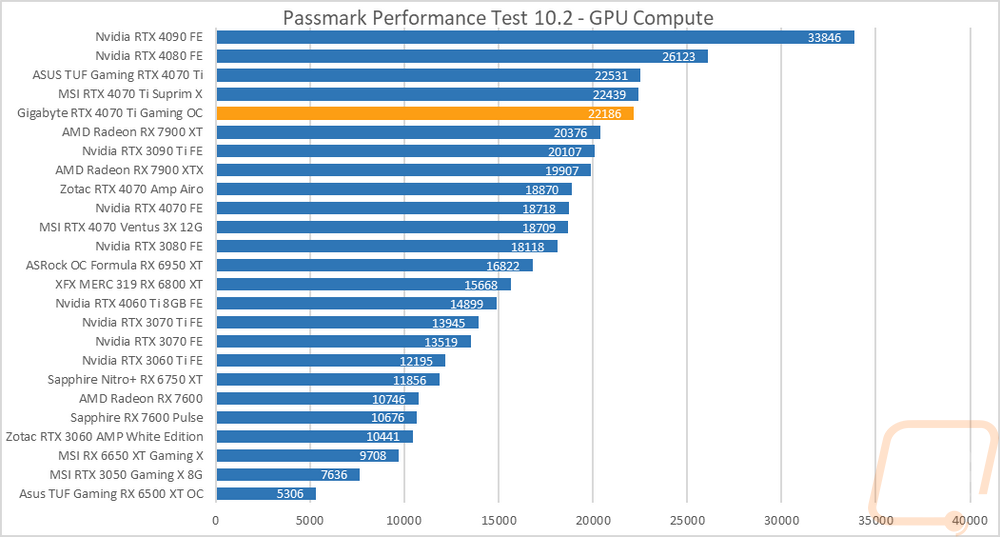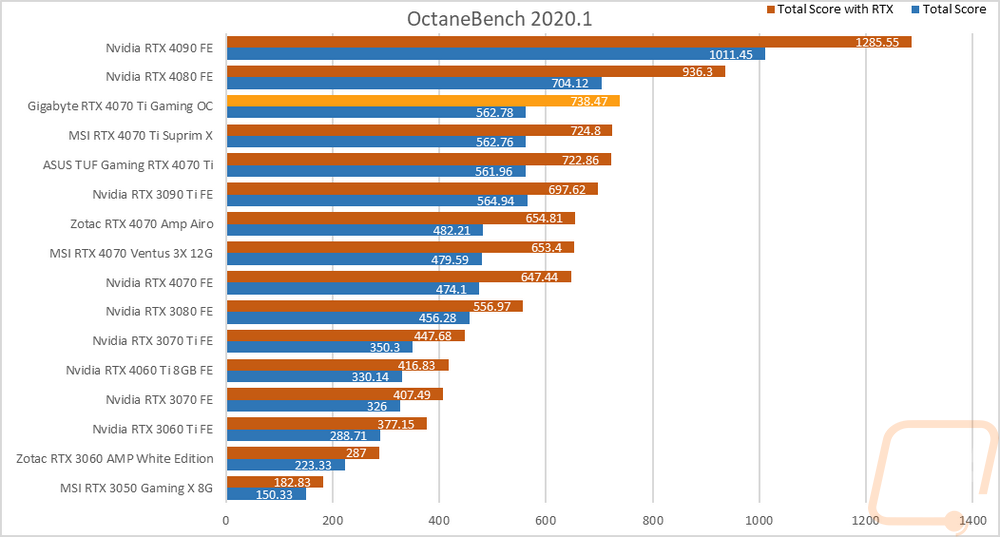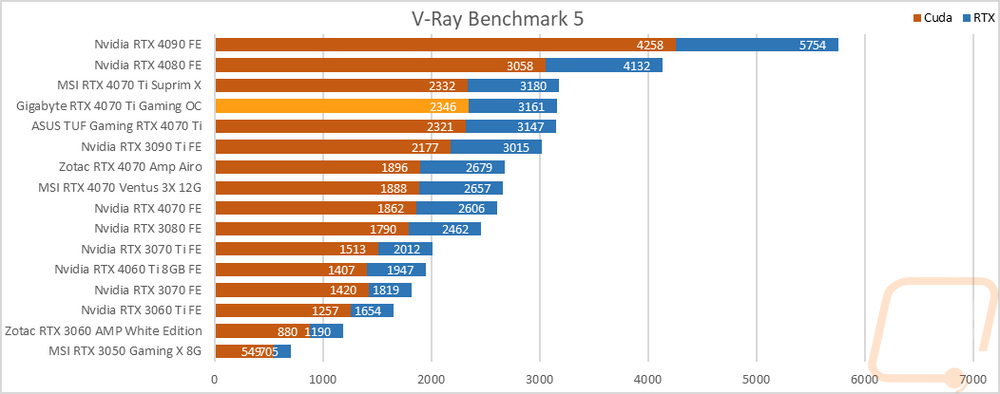Compute Benchmarks
Now some people don’t need a video card for gaming, they need the processing power for rendering or 2D/3D production, or in some cases people who game also do work on the side. So it is also important to check out the compute performance on all of the video cards that come in. That includes doing a few different tests. My first test was a simple GPU Compute benchmark using Passmark’s Performance Test 10 and the RTX 4070 Ti Gaming OC is noticeably down compared to the other two here but still out in front of both RX 7900s with just the RTX 4080 and RTX 4090 ahead of them.

Blender is always my favorite compute benchmark because the open-source 3D rendering software is very popular and it isn’t a synthetic benchmark. With the latest version of Blender, they redid the benchmark so we now have a new test that runs three different renderings and gives each a score. I have all three stacked together so we can see the overall performance. The Suprim X with its higher overclock edged out the RTX 4070 Ti Gaming OC here but both cards have a big margin ahead of the 3090 Ti and are worlds ahead of anything from AMD with the 7900 XTX back behind the RTX 3070.

For CUDA-based cards, I also check out OctaneRender performance using their OctaneBench 2060.1 benchmark which allows me to check out both RTX and non-RTX rendering performance. Here the RTX 4070 Ti Gaming OC has a good margin in the RTX result ahead of both the Suprim X and TUF, without RTX it is also ahead by just a fraction of a point on both.

An additional CUDA-based test I also ran V-Ray Benchmark 5 to check out CUDA and RTX performance in the 3D rendering and simulation software. The RTX 4070 Ti Gaming OC is out in front of both 4070 Ti’s for the CUDA result but in the middle of the pack for the RTX result. This was still enough to be ahead of the RTX 3090 Ti in both tests by a good margin as well.



